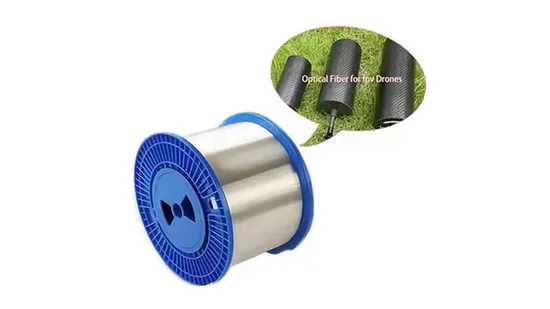What is a G.657.A2 0.26mm Fiber?
The G.657.A2 0.26mm fiber is a specific type of bend-insensitive single-mode optical fiber that has become a critical component in modern telecommunications, particularly for Fiber-to-the-Home (FTTH) and other high-density network applications. Its designation refers to the ITU-T G.657 standard for bend-insensitive fibers, with the “A2″ indicating a high level of bend performance, and the “0.26mm” specifying the diameter of the fiber’s protective coating.
This combination of features results in a fiber that is not only remarkably flexible and resilient to bending-induced signal loss but also enables the creation of smaller, more compact fiber optic cables. These characteristics are paramount in environments where space is a premium and intricate cable routing is necessary.
Key Characteristics and Specifications
The G.657.A2 standard defines a single-mode fiber with exceptional bend performance, allowing for a minimum bending radius of just 7.5 millimeters. This is a significant improvement over standard single-mode fibers, such as G.652.D, which typically have a minimum bend radius of 30 millimeters. This enhanced flexibility is achieved through a specialized core and cladding design that confines the light signal more effectively, even when the fiber is bent sharply.
A crucial aspect of this fiber is its full compatibility with the widely deployed G.652.D fiber. This means that G.657.A2 fibers can be seamlessly spliced and connected with existing fiber optic networks, simplifying installation and reducing costs.
The “0.26mm” or 260-micron (µm) dimension refers to the outer diameter of the fiber’s acrylate coating. While the standard coating diameter for colored single-mode fibers is often around 250µm, a 260µm coating can be found in certain cable designs, sometimes referred to as “invisible” or transparent cables. The trend towards reduced coating diameters (down to 200µm or even 180µm) allows for more fibers to be packed into a smaller cable, increasing the overall fiber density.
Typical performance specifications for G.657.A2 fiber include:
Attenuation: The reduction in signal strength over distance. Typical values are around 0.35 dB/km at a wavelength of 1310 nm and 0.21 dB/km at 1550 nm.
Macro-bending Loss: The signal loss caused by bending the fiber. For a G.657.A2 fiber, the loss for one turn at a 7.5mm radius at 1550nm is specified to be extremely low, typically less than 0.5 dB.
Advantages and Primary Applications
The unique characteristics of G.657.A2 0.26mm fiber offer several distinct advantages:
Enhanced Flexibility and Installation Ease: The ability to bend tightly without significant signal loss makes installation in confined spaces, around sharp corners, and within small enclosures much simpler and more reliable. This reduces installation time and the risk of fiber damage.
Higher Density and Miniaturization: The smaller coating diameter contributes to the overall reduction in cable size. This allows for the deployment of higher fiber count cables in existing ducts and facilitates the use of smaller and more discreet termination boxes and outlets.
Improved Network Reliability: By minimizing the impact of bending on signal integrity, G.657.A2 fibers contribute to a more robust and reliable network with fewer service disruptions.
Cost-Effectiveness: The ease of installation and the ability to use existing infrastructure more efficiently can lead to lower overall deployment costs for FTTH and other access networks.
These advantages make G.657.A2 0.26mm fiber the ideal choice for a variety of applications, including:
Fiber-to-the-Home (FTTH): Bringing high-speed internet directly into homes and apartments, where cable routing can be challenging.
Data Centers and High-Density Environments: Managing a large number of fiber connections in racks and cabinets where space is limited.
In-Building Networks: Deploying fiber optic cabling within office buildings, multi-dwelling units (MDUs), and other structures.
Microduct and Air-Blown Fiber Systems: Utilizing small-diameter cables in microducts for rapid and scalable network expansion.
‘Invisible’ Cable Solutions: Deploying transparent or minimally visible cables for aesthetically sensitive installations.
Post time: Jul-23-2025


